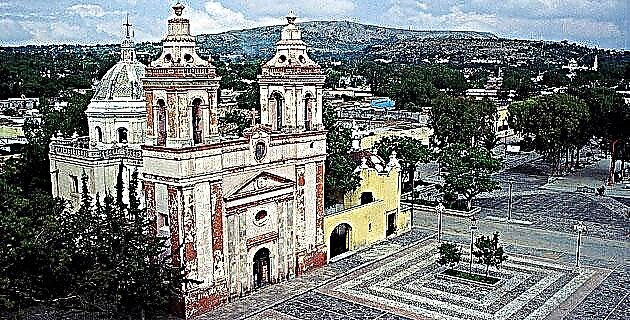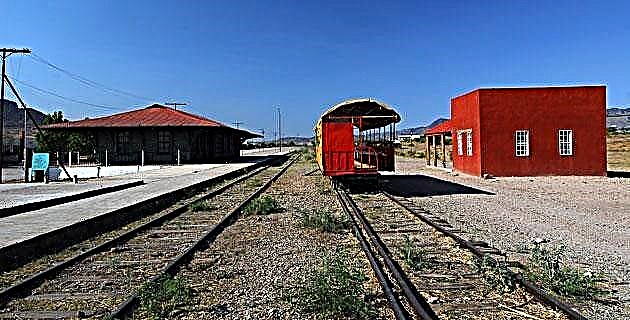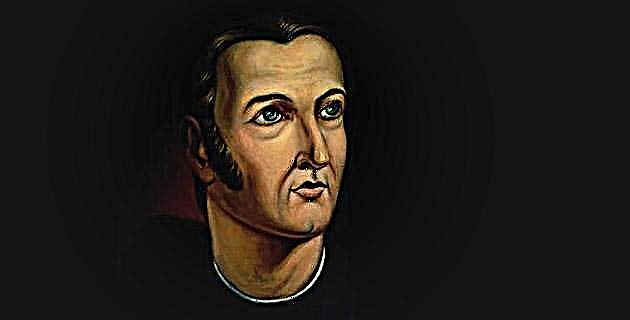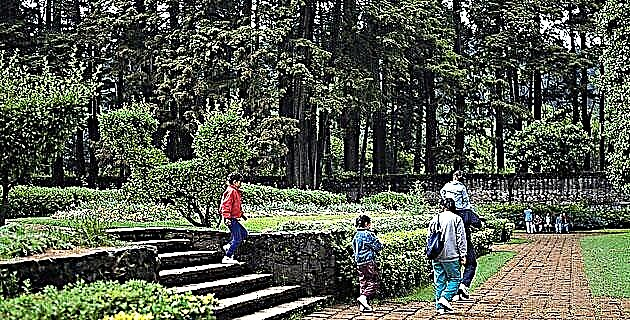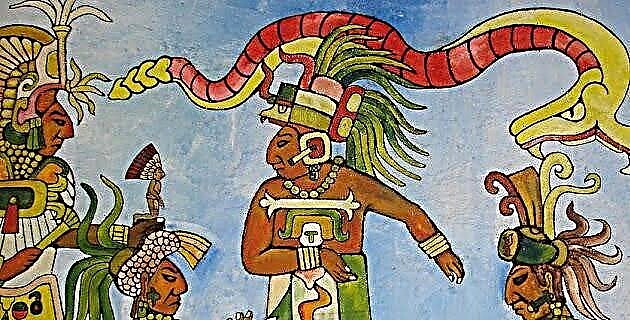
At the end of the 20th century, the Mayans have come disturbing consciences. Their culture, still alive, has been able to jeopardize the stability of a nation.
Recent events have made many aware of the existence of the Indians, recently considered beings of folklore, producers of handicrafts or diminished descendants of a glorious past. Likewise, the Mayan peoples have spread the conceptualization of the indigenous as an identity not only alien to the western one, but completely different; They have also highlighted and denounced the centuries-old injustice to which they have been subjected and have shown that they are capable of convoking the mestizo and Creole people that surround them to open up to a new democracy, where the will of the majority leaves a dignified space for the will of the minorities. .
The splendid past of the Mayans and their history of resistance have led researchers to study their today and their past, which has revealed a form of human expression full of vitality, tenacity and values that could teach humanity; such as living in harmony with other men, or the collective sense they had of social coexistence.
The National Autonomous University of Mexico has collected the concerns of several researchers who admire this millenary culture and has brought us together at the Mayan Studies Center for 26 years. The Mayan Culture Seminar and the Commission for the Study of Mayan Writing were the foundations of the Center for Mayan Studies; both with parallel lives that later joined to form the new Center, declared legally established in the session of the Technical Council of Humanities of June 15, 1970.
Dr. Alberto Ruz, who discovered the tomb of the Temple of the Inscriptions of Palenque, joined the UNAM as a researcher at the Institute of Historical Research in 1959, although, in fact, he was attached to the Nahuatl Culture Seminary, which at that time was directed by Angel Maria Garibay. The following year, with the promotion to Secretary General of the UNAM of Dr. Efrén del Pozo, the Seminar of Mayan Culture was founded within the same Institute, which was transferred from that institution to the Faculty of Philosophy and Letters.
The Seminar was structured with a director, the teacher Alberto Ruz, and some honorary advisers: two North Americans and two Mexicans: Spinden and Kidder, Caso and Rubín de la Borbolla. The researchers who were hired were already recognized in their time, such as Dr. Calixta Guiteras and Professors Barrera Vásquez and Lizardi Ramos, as well as Dr. Villa Rojas, who is the only survivor of the original group.
The goals of the seminar were the research and dissemination of the Mayan culture, by specialists in the fields of history, archeology, ethnology and linguistics.
The work of maestro Ruz paid off immediately, he founded his own library, he undertook the task of compiling a photo library that was based on his personal collection and created a periodic publication Estudios de Cultura Maya, as well as special editions and the series “ Notebooks". His editorial work was crowned with 10 volumes of Studies, 10 "Notebooks" and 2 works that quickly became classics of the Mayan bibliography: Cultural Development of the Mayas and Funerary Customs of the ancient Mayans, recently reissued.
Although the work was intense, the passing of the Seminar was not easy, since in 1965 the contracts for the researchers were not renewed and the staff was reduced to the director, a secretary and two scholarship holders. At that time, Dr. Ruz directed several theses, among which we must mention those of Marta Foncerrada de Molina on Uxmal and that of Beatriz de la Fuente on Palenque. From the first, I want to emphasize that, while he lived, he always gave his support to the researchers of the Center. From the second I want to recall that her brilliant career in the study of pre-Hispanic art has led her, among other honors, to be named emeritus teacher of the National Autonomous University of Mexico.
Another decisive factor in the founding of the Center was the Commission for the Study of Mayan Writing, born independently of the UNAM, in the Southeast Circle, in 1963; This commission brought together a series of researchers interested in dedicating themselves to deciphering Mayan writing. Admired by the advancements of foreign scholars, they decided to form a group that would endeavor to unravel the mysteries of writing. Supported with donations and housed in the Electronic Computing Center of the UNAM, the institutions that in some way contributed the work of its researchers and sporadic and precarious funds were the National Institute of Anthropology and History, the University of Yucatan, the Veracruzana University, the Summer Institute of Linguistics and of course the UNAM, specifically the Mayan Culture Seminar, which by then was already 3 years old.
In the constitutive act of the commission, the signatures of Mauricio Swadesh and Leonardo Manrique stand out; Those who coordinated its functions were successively: Ramón Arzápalo, Otto Schumann, Román Piña Chan and Daniel Cazés. Its objective was "to bring together in a common effort the techniques of philology and those of the electronic handling of linguistic materials with the goal of arriving in the near future to decipher the writing of the ancient Maya."
Alberto Ruz, a determined animator of this commission, in 1965 invited Maricela Ayala, who since then has devoted herself to epigraphy at the aforementioned Center for Mayan Studies.
Since the engineer Barros Sierra took office, as rector of the UNAM, he offered his support to the Commission, and thanks to the interest of the Humanities Coordinator, Rubén Bonifaz Nuño and other authorities, he joined the University, with the designation of Seminary of Studies of Mayan Writing.
By then, the group of deciphers of the Mayan writing had complete and integrated works, so its director, Daniel Cazés, conceived the series "Notebooks" which, prefaced by him, edited the Mayan Culture Seminar. Six of these publications corresponded to Cazés's own investigations. Together both Seminars and under the rector of Dr. Pablo González Casanova, the Center for Mayan Studies was declared instituted by the Technical Council for Humanities, chaired by Rubén Bonifaz Nuño.
Since 1970 the compass of the activities of the Center for Mayan Studies has been:
“Knowledge and understanding of the historical trajectory, cultural creations and the Mayan people, through research; the dissemination of the results obtained, mainly through publication and the chair, and the training of new researchers ”.
Its first director was Alberto Ruz, until 1977, when he was appointed Director of the National Museum of Anthropology and History. He was succeeded by Mercedes de la Garza, who already under the name of Coordinator occupied it until 1990, for 13 years.
After years of academic research in the Mayan field, we have the conviction that they have always acted according to the principles initially established, making contributions that increase knowledge of the Mayan world, lead to new explanations, propose different hypotheses and bring to light vestiges covered by nature.
These searches were and are being exercised with the methods of different disciplines: social anthropology and ethnology, archeology, epigraphy, history and linguistics. For 9 years the Mayans were also studied from the perspective of physical anthropology.
In each of the scientific areas, particular or joint research has been carried out with other members of the same Center, the Institute of Philological Research or other agencies, both from the National University and from other institutions. Currently the staff consists of 16 researchers, 4 academic technicians, 3 secretaries and a quartermaster assistant.
It should be noted that although their work does not depend directly on the University, the Mayan lineage is represented in the Center, with the Yucatecan Jorge Cocom Pech.
I especially want to remember those colleagues who have already passed away and who left us their affection and knowledge: the linguist María Cristina Alvarez, to whom we owe the Ethnolinguistic Dictionary of Colonial Yucatec Maya, among other works, and the anthropologist María Montoliu, who wrote When the gods awakened: cosmological concepts of the ancient Mayans.
The productive impulse of Alberto Ruz lasted through Mercedes de la Garza, who in the 13 years of his administration promoted the printing of 8 volumes of Mayan Culture Studies, 10 notebooks and 15 special publications. I wish to emphasize that in its beginnings, it was foreigners who disseminated their contributions in our magazine; However, Mercedes de la Garza was in charge of encouraging the researchers to assume the journal as their own and to collaborate in it constantly. With this, a balance was achieved between internal and external collaborators, whether national or foreign. Mercedes de la Garza has given Mexican Mayistas a window to the world.
It should be noted that Mercedes de la Garza owes the creation of the Series of Sources for the Study of Mayan Culture that has appeared without interruption since its inception in 1983. To date 12 volumes, linked to this is the formation of a documentary aservo with photocopies of files from very diverse national and foreign archives that have been the basis of important investigations.
Although the numbers can say little about the academic contributions, if we count the thick volumes of the Proceedings of the Congresses, we gather a total of 72 works under the rubric Center for Mayan Studies.
The successful 26-year journey has been motivated and facilitated by the three directors of the Institute: Doctors Rubén Bonifaz Nuño, Elizabeth Luna and Fernando Curiel, whom we acknowledge for their determined support.
Nowadays, in the field of epigraphy an investigation on Toniná is being concluded and the project of creating a glyph library that integrates the infrastructure to carry out research in the field of deciphering Mayan writing is taking shape. Linguistics is exercised with studies on the Tojolabal language and semiotics in the Chol language.
In archeology, for many years excavations have been made in the municipality of Las Margaritas, Chiapas; The book that concludes part of these studies will be published soon.
In the field of history, several researchers are dedicated to the decoding of Mayan symbols in light of the comparative history of religions. Also within this discipline, an attempt is being made to reconstruct the pre-Hispanic Mayan law at the time of contact, work is being done on the indigenous governments in the highlands of Chiapas in colonial times, around the performance of the order of mercenaries in the area. and the reconstruction of the past of the Itza in their pre-Hispanic and colonial times.
At present, the Center is animated by a deep spirit of labor integration that moves and enriches the search for answers about a people that eagerly struggles to remake its image from a folkloric entity to an entity with the capacity to take a place in society and national history.
Ana Luisa Izquierdo She is a Master in History graduated from UNAM. Researcher and coordinator of the Center for Mayan Studies at UNAM. She is currently director of Mayan Culture Studies.
Source: Mexico in Time No. 17. 1996.

